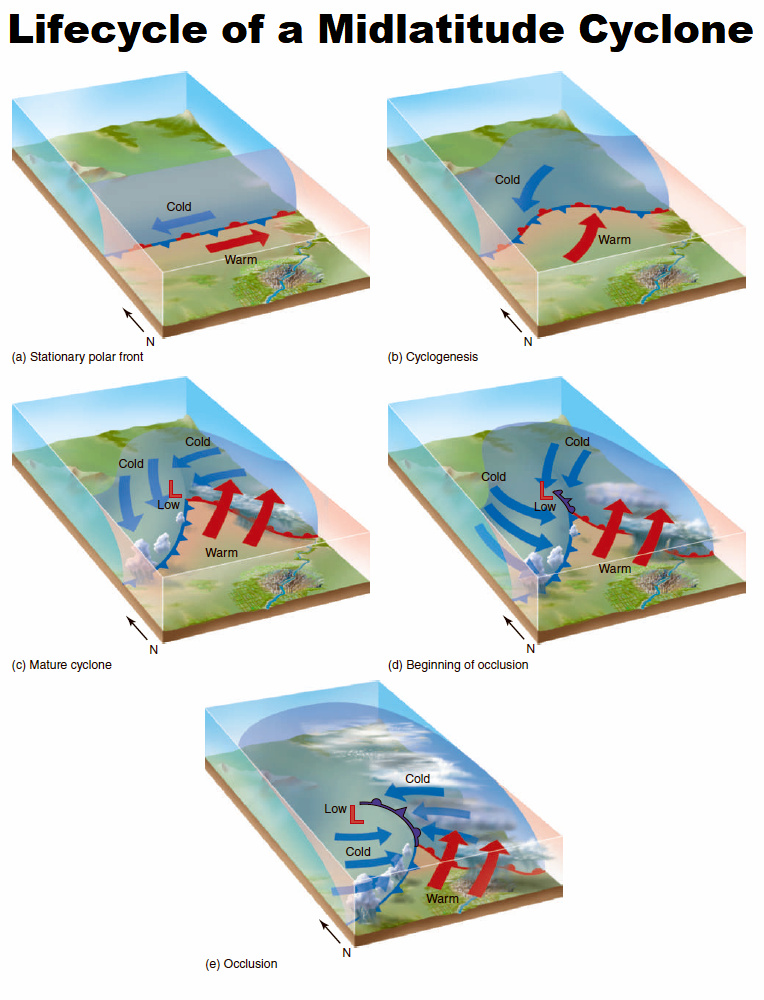- Cyclone = any circulation around low-pressure.
- Extratropical Cyclone = large low-pressure system that often form in the mid-latitudes.
- Day-to-day weather in the mid- and high-latitudes is closely related to the location, development, and movement of cyclonic storms.
- Cyclones are responsible for:
- Changing air masses (temperature, dew point, wind, etc)
- Bringing precipitation opportunities
- Most weather is linked to extratropical cyclones, rather than being discrete weather events.
- Vertically speaking, they're found in the tropopause.
- Needed to balance temperature differences between the poles and equator (between the cold upper troposphere and the warm lower troposphere).
- Most intense in the late fall, winter and spring due to the temperature gradient between the tropics and the north pole being the strongest during that time.
- Winds blow counterclockwise (cyclonically) in the northern hemisphere and clockwise (cyclonically) in the southern hemisphere.
- It forms at intersecting fronts:
- Cold front is typically south and west, to east of the low.
- Cold air is "behind" the low, while warm air is "ahead" (lows and highs both move in the direction of the jet stream winds).
- Thunderstorms are often ahead of the cold front.
- Steady precipitation is often ahead of the warm front.
- Cloud Sequence: cirrus, cirrostratus, altostratus, nimbostratus
Norwegian / Bergen Cyclone Model
- During WWI, Vilhelm Bjerknes identified that midlatitude cyclones formed along the boundary separating polar air from the warmer air to the south.
- Widely used by weather forecasters to intercept and anticipate changes in the surface synoptic chart.
- Most real cyclonic disturbances do not fit the model perfectly.
- Things that are difficult to identify:
- Warm fronts
- Problems with topography distorting / obscuring fronts.
- Some storms develop away from the stationary front.
- Fronts sometimes develop by themselves.
Aguado, Edward, and James E. Burt. Understanding Weather and Climate. 7th ed., Pearson, 2014.



No comments:
Post a Comment